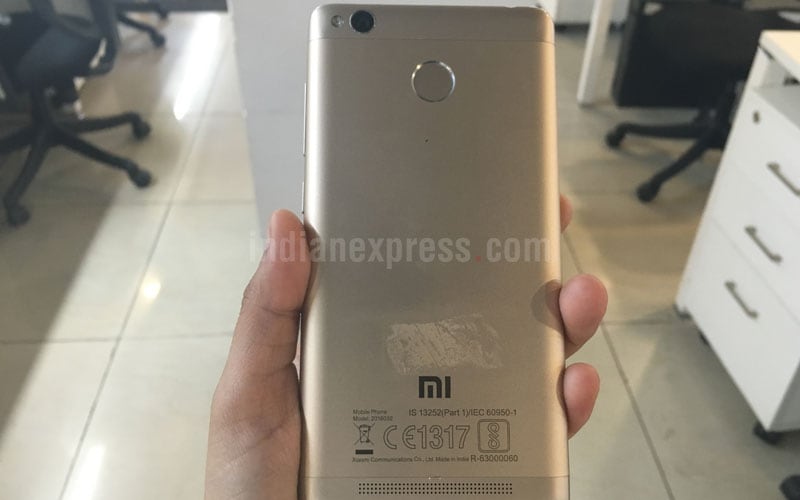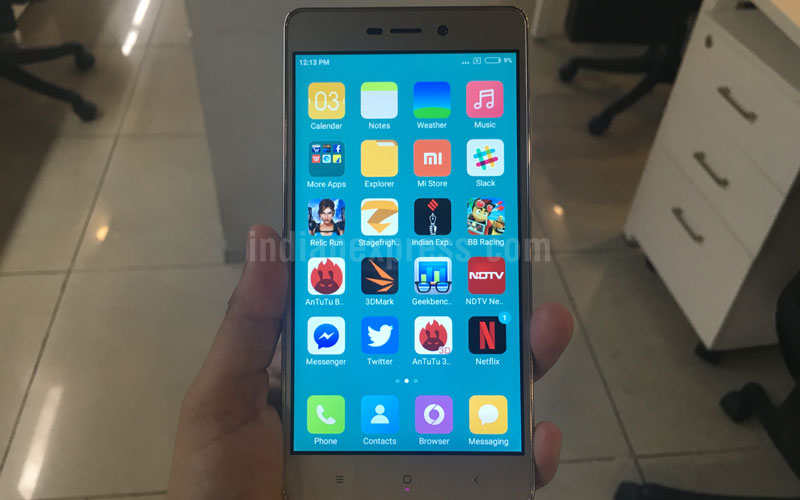Xiaomi Redmi 3S Prime launched: Here’s our first impression
Xiaomi Redmi 3S has been launched in India at a price of Rs 6,999 and here's our first impression of the smartphone.
 Xiaomi Redmi 3S Prime and Redmi 3S have been launched at a starting price of Rs 6,999. Here is our quick review of the phone.
Xiaomi Redmi 3S Prime and Redmi 3S have been launched at a starting price of Rs 6,999. Here is our quick review of the phone.
Xiaomi’s Redmi 3S Prime and Redmi 3S, the company’s next smartphones for India, have been launched at a price of Rs 8,999 and Rs 6,999 each. Xiaomi’s new Redmi 3S series is the company’s first fully Made-in India one and, according to the company, all of its units for these phones are made in the country, from the box to phone accessories.
Xiaomi Redmi 3S comes with 2GB RAM/16GB storage, while the Redmi 3S Prime has 3GB RAM and 32GB storage. The 2GB Redmi 3S doesn’t have a fingerprint scanner on the back, unlike the Redmi 3S Prime. Given the pricing, the Redmi 3S and its Prime version are a new offering in the budget segment from Xiaomi.
In terms of specifications, Redmi 3S and 3S Prime have a 5-inch HD display, Qualcomm Snapdragon 430 octa-core processor, 13 MP primary camera and a 5 MP secondary camera. The battery is 4100 mAh. Xiaomi Redmi 3S runs MIUI 7 based on Android 6.0.1 Marshmallow and will come in Gold, Grey and Silver colour options. I’ve been using the Redmi 3S Prime, (the 3GB RAM version), and here’s my first impression of the phone.
If you look at the design of the Redmi 3S phones, you are reminded of the Redmi Note 3. It’s fair to say this is a pared-down version of the Redmi Note 3, with the smaller HD resolution display, the Snapdragon 430 processor. But Xiaomi has kept the metal unibody design as the same, and this price-point it is unusual to find a smartphone that looks so good. However the Redmi 3S Prime costs only Rs 1000 less than the 16GB version of the Note 3. Xiaomi now has smartphones in all price points: Rs 6,999, Rs 8,999, Rs 9,999 and Rs 11,999, and for a user it will be a tough choice to pick the one they need.
What is interesting is the battery in the Redmi 3S phones is slightly bigger than the one in Redmi Note 3 at 4100 mAh. I say interesting, because the phone is incredibly light when you hold it, and it doesn’t feel bulky at all. The battery size means this phone won’t die anytime soon. I have had this phone for five days, and now the battery has come to 11 per cent. This includes setting up the phone, downloading games, watching Netflix and some more. With Redmi 3S Prime, I would say the battery is an impressive USP, especially for cheaper Rs 6,999 version.
 Redmi 3S Prime looks like a smaller and pared-down version of the Redmi Note 3.
Redmi 3S Prime looks like a smaller and pared-down version of the Redmi Note 3.
Xiaomi’s new phone has a more compact 5-inch display. Yes, the HD resolution feels underwhelming, given that I’m now used to bigger full HD display. I watched two Netflix episodes on this and I could feel the difference. But then again, it is still a very good display from Xiaomi.
On the overall performance front, the Redmi 3S Prime has so far proved to be more than adequate. Games like Asphalt 8 run smoothly on this, with no heating, and I’ve not yet faced any app crashes. But I’m going to spend some more time with the software and the phone, to see how it continues to perform.
The rear camera is 13MP, and I’ve not had a chance to use it in varied lighting conditions. However, the few shots I’ve taken in office are more than acceptable, much better than several other budget smartphones with their 13MP cameras. The camera is fast, with no shutter-lag, and focuses quickly.
 The lack of a full HD display is a big disappointing on this phone.
The lack of a full HD display is a big disappointing on this phone.
Xiaomi has renewed its focus on India with smartphones launching in quick succession. 2016 in a way began with Redmi Note 3, followed by the premium Mi5, and phablet Mi Max. Now Redmi 3S and Redmi 3S Prime are here to shake up the budget segment. Also both are 4G VoLTE smartphone and will support band 5 in India, which is crucial for those looking to run their Reliance Jio 4G SIMs. I have still to use a Jio SIM on this, but will add more in my final review.
Xiaomi has also indicated it wants to bring more of its products to the country as it looks to expand beyond China. Whether we should expect TVs or Mi Water Purifiers to come here is still unknown, but no doubt India is getting maximum attention from the company. Xiaomi recently launched the Mi Notebook Air and Redmi Pro in China, although it doesn’t look like these products are headed here anytime soon.
 Sample shot from Redmi 3S. Image resized for web.
Sample shot from Redmi 3S. Image resized for web.
Xiaomi Redmi 3S/3S Prime are a solid offering, and gives the company an extra boost in this highly competitive budget segment, which has also been Xiaomi’s core strength. Whether the addition of two new Redmi phones, helps Xiaomi dominate this segment remains to be seen.






